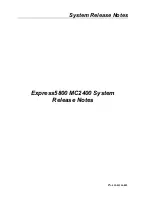
L-INX User Manual
184
LOYTEC
Version 4.0
LOYTEC electronics GmbH
more than 10 IP-852 devices and packet rates of more than 500 packets/s. Please use the
configured router mode from Section 7.1.1 for larger IP channel configurations.
Further, it is recommended to configure a multi-cast group for routers in the smart switch
mode to reduce the traffic burden and improve scalability. Refer to Section 7.4 on how to
configure the device to use multi-cast.
7.1.3 Store-and-Forward Repeater
The router can be configured to operate in a repeater mode, where all messages are
forwarded regardless of the address format.
This operating mode uses the ―channel routing‖ strategy on the IP channel to distribute IP
packets. It uses flooding to send all packets on the IP channel to all IP devices on this IP
channel. The advantage of this operating mode is that it is fully plug&play and no router
configuration is required. The disadvantage is that this operating mode doesn‘t scale very
well with larger networks. We do not recommend this operating mode for IP channels with
more than 10 router devices and packet rates of more than 500 packets/s.
Further, it is recommended to configure a multi-cast group for routers in repeater mode to
reduce the traffic burden and improve scalability. Refer to Section 7.4 on how to configure
the device to use multi-cast.
7.1.4 Smart Switch Mode with No Subnet Broadcast Flooding
This operating mode is the same as the smart switch mode from Section 7.1.2 with the only
difference that subnet wide broadcasts are not flooded in this mode. This operating mode
can be used in large network installations where the network management tool uses group
overloading to replace group addresses with subnet wide broadcasts. In this operating mode,
the network installer must ensure that one subnet address may only exist behind one and no
more than one network port. This condition is met if nodes are installed using an LNS based
tool, on different channels that are separated with a router shape.
This operating mode uses the ―channel routing‖ strategy on the IP channel to distribute IP
packets. It uses flooding to send all packets on the IP channel to all IP devices on this IP
channel. The advantage of this operating mode is that it is fully plug&play and no router
configuration is required. The disadvantage is that this operating mode doesn‘t scale very
well with larger networks. We do not recommend this operating mode for IP channels with
more than 10 devices and packet rates of more than 500 packets/s.
Further, it is recommended to configure a multi-cast group for the router in the smart switch
mode to reduce the traffic burden and improve scalability. Refer to Section 7.4 on how to
configure the device to use multi-cast.
7.2 CEA-852 Device of the Router
Every L-INX acts as a device on the IP channel. It either needs to contact a configuration
server or a configuration server needs to contact the device in order to set up the proper
routing tables. Before a device can become a member of the IP-852 channel it needs to have
proper IP settings (see Section 4.2.4):
IP address/netmask/gateway (either via DHCP or manual entry), see Section 4.2.4
Auto-NAT or manual NAT address if used behind a firewall/NAT router, see Section
4.2.7
MD5 secret if authentication is required, see Section 4.2.7
Please consult Sections 4.2.4 and 4.2.7 on how to setup a CEA-852 device.
















































